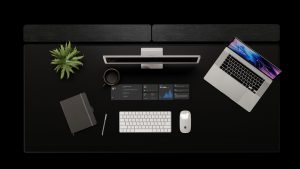
Strategic, high-quality photography is important to every brand. After all, 67% of consumers say the quality of a product or branded photo is “very important” in selecting and purchasing an item. This is especially true for online retailers, for which product photography serves as one of the only visual touchpoints on a potential customer’s buyer journey.
There are tons of high-quality stock photography options out there, and we’ll highlight a few of those for you at the end of this post. However, the most successful businesses in the retail space are taking their own original photography. This applies to both those selling unique items, as well as those offering third-party merchandise. Doing so helps brands to stand out amongst the competition, to put a truly unique and personal touch on an image and to ensure that visual resources are always putting the business’s best foot forward and driving awareness overall.
With multi-channel selling beginning to dominate the distribution strategies of all retailers, stock photography often doesn’t offer the flexibility needed for varying images on varying platforms. Original photography can give the power back to your in-house team and allow you to create channel-specific images proven to increase sales.
Of course, by bringing photography into your in-house operations, you’ll need to think through a few things.
Style the entire image
Before taking a photo, it’s important to style the entire look. In-store shoppers can get a feel for the product, but online, there is no such luxury. Instead, an image will need to convey the entire experience a consumer will have with a product post-purchase. Individualized product images can give online customers a view at the product itself, and even allow them to zoom in to determine quality, fabric, make, model, etc. But you’ll also want to include a lifestyle shot.
A lifestyle shot is an image that shows the product in use. Your lifestyle shots will vary depending on your product offering and your target audience. Here are a few examples.

Lifestyle shot of a Shabby Apple flannel dress.

Lifestyle shot of a Fugoo speaker.
In the case that a photo just won’t do for a lifestyle image, consider using a video, like Replacement Laptop Keys.
When styling your lifestyle shoots, it is important to think like a shopper. Unlike pre-set stock photos, brands can make styling choices to embellish certain aspects of their company or line and highlight what unique qualities make them the best fit for a shopper. Think through buyer persona. Look through Instagram posts. See what is resonating with your core audience, and then include similar styles or items in your images. Remember, too, that you can always include more than one product in your shot. This way, you can use the same photo for multiple products and show customer how well they pair together to increase your average order value.
Find the right models
Using the right model is just as crucial as styling the right look. Use models who look like and connect with your target demographic. Think through diversity, as well. Not including a diverse demographic can seriously pigeonhole your brand and cause lost sales for potential customer segments.
One creative way brands solve for this is by including an Instagram feed or stream of customer photos. This allows for crowdsourcing, which will showcase your items in varying shots with different people –– all without you having to create them. Of course, you still need a good, original lifestyle photo for your product page outside of your crowdsourcing offering.

See how Josie Maran’s online store uses an Instagram feed on the bottom of product pages to serve as product lifestyle images.

See how Rent the Runway uses crowdsourced customer photos to increase the amount of diversity in their products.
Some brands take models one step further and hire out celebrities or influencers to help. This can often drive up excitement and sales depending on your target audience and the influencer chosen. Online store Flash Tattoos, for instance, was able to do this with Beyonce.
Create a thorough style guide
As your brand develops a multi-channel presence and begins to understand which aesthetics produce the highest ROI in each channel, be sure to build out a style guide to keep photography consistent from one platform to the next. A thorough style guide should include information about aspects like lighting, post-production edits, product placement templating, coloring, model poses, etc.
From channel to channel, style guides give brands the dexterity to adapt their photography and leverage the unique strengths of each. For example, sharp product photos perform well on purchasing-focused sites like Google Shopping and Amazon, whereas shoppers enjoy more stylized photos on sharing sites like Pinterest or Instagram. Style guides help to outline the necessary product shots per item so you don’t have to retake images later on down the road.
Style guides are also extremely useful during periods of growth. When brands expand, a thorough style guide can help c-suite personnel voice their opinions and recommendations even as their attention gets pulled in various directions. Plus, a style guide helps new team members better understand what is important to branding and enables you to bring on new photographers and get them up to speed quickly.
Explore your stock imagery options
Of course, original photography is only as good as the quality of the image. If you still do not have the capacity to produce your own images, or have a limited capacity, these stock photo sites can be useful for one-off projects or regular use. It’s your business, you decide what makes sense.
- StockSnap.io: This is a Bigcommerce go-to. Simply use the search bar to look for high-quality images and then download them in whichever size you need.
- Gratisography: These images are uploaded sporadically, but they are almost always unusual, unique and quirky. For some brands, this is exactly what you’re looking for. For others, this can help to add some personality to your emails or social channels.
- Death to Stock Photo: Sign up to receive a monthly pack of high-quality, hi-res images.
- Unsplash: These are updated every 10 days. Sign up to receive the full 10-photo download every 10 days, or simply browse the site to download the images individually.
- Creative Commons: All Creative Commons images will need a link back for credit. Be sure to only use these images if you can provide that. Blog posts and emails are good options here. Flickr is usually the best option for search for images.
Happy photographing!
Digital & Social Articles on Business 2 Community(47)
Report Post

